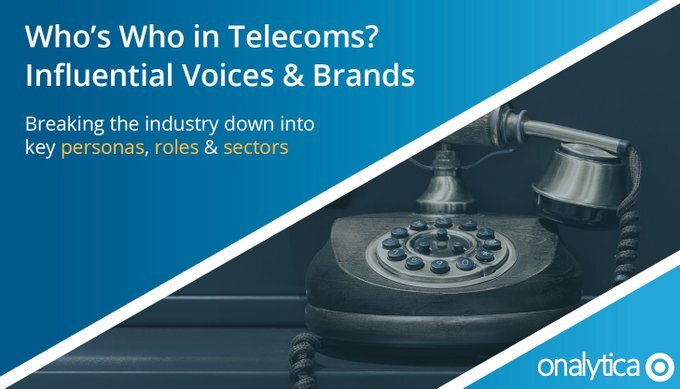Genband Perspectives 2015 - 4 Takeaways
/First, I only had one full day for keynotes and sessions, so it's not a complete picture. Am pretty sure I saw the richest presentations in terms of messaging, but it was all about the industry and Genband's business. I didn't see or hear anything about their financial performance, go-to-market/channel plans, or how they're going to monetize Kandy. In short, from what I saw, there was very strong content about both sales and vision for how the comms space is being transformed, and pretty good content about marketing as well as demos for how various customers are using Kandy.
Second, the event was in a bigger venue this year, but it's hard to say if the audience was really larger. Anyhow, the main room was spaced out more this time, and even though analysts/media had front row seating again, we were set off pretty far to the right and back from the stage. I don't have a great camera - that's another story - and taking photos was just not an option short of walking up closer. They had roving professional photographers doing this all day long, so I'll leave that to them. As such, I just have one photo to share from the venue.
Finally, for reference, here's my post from last year's event, which does have more photos - and if you didn't know any better, they could have passed for Perspectives 2015. :-)
1. "Protect what you have, invest for the future"
This was the mise en scene CEO David Walsh used to position Genband's customers for success in today's world of rapid, constant change. Fear is a great motivator, and the show opened with a high energy perfomance piece by actor Steve Connell (@steveconnell). It was pretty OTT - pun intended - but a great way to set the tone early that carriers need to adapt or die. This could have been the preamble to a pro sports event - "you play the game to win, not to lose" and "learn how to play the game better" - but totally on message for the challenges facing all carriers now.
David Walsh has his own style of presenting and he did a great job talking about how every aspect of our daily lives is being transformed by technology, and that "boundaries are being broken every day". He is genuinely imploring carriers to think this way as the status quo doesn't work any more. Naturally, Genband is the perfect partner to help them do that - both to protect their customer base with innovative applications, and to transition away from outmoded legacy networks to the cloud.
2. Green telephony
He also touched on this last year, but here he clearly articulated the virtues of going to the cloud. If you strip away all the drivers around making money and just focused on the environmental impact, there's a very powerful story here. He cited a string of facts and figures around heating and power consumption (and costs), then showing the magnitude of change with the cloud. If fighting global warming and saving the planet are key criteria for your decision-making, Genband totally gets it.
Just as effective, however, were the data points he shared about the economic impact, and this will resonate even stronger with anyone trying to build a business case to move on from the PSTN. He cited how there are 30,000 Central Offices in the U.S., and there's a huge real estate opportunity waiting to happen as telcos reduce their footprint when converting to IP. The PSTN remains a $100 billion business in the U.S., and telcos are still spending $1.3B annually to keep it going.
His main message from this is that if all those savings and opportunities were channeled properly, there's more than enough money to fund the move away from legacy to the cloud. Clearly, this is a vision problem, not a financial problem, and if all carriers invested in their future this way, everyone would be better off - carriers, customers and the planet.
3. Ecosystems create value
Now we get to Kandy, which is really the focus of their business now. We heard a lot about embedded communications being the key to survival for carriers, and if they don't get on board with the cloud and WebRTC, OTTs will continue taking their traffic, revenues and customers. All that's left will be a hardware-based network, and that won't get you much these days. On that note, I thought these posters in the hallway told the story pretty well. Today's customers want a personalized experience with apps they can use anywhere, any time and with anyone. That's kind of how we like to communicate as people, and not let technology get in the way.
Kandy is the solution by providing carriers a rich platform and ecosystem for delivering this experience and providing apps that customers will not only use, but will be happy to pay for. We certainly saw some great vertical market examples, so I have no doubt about what Kandy can do. It's just not clear to me what the revenue opportunity is for Genband and if it's enough to keep them playing at a high level.
4. "We aim low and succeed"
Every conference has a special speaker, and Genband sure picked a good on in Sir Ken Robinson. I was hardly alone in not knowing him, but now I will avidly say you should follow him (@SirKenRobinson) and check out his writings on creativity and the education system. Great stuff here, and the "aim low and succeed" mentality really says it all. He spoke at length about how we're not really encouraged to be creative or even believe that we can be. With his classic British tongue-in-cheek delivery, Sir Ken made the point by telling how the music teacher of both Paul McCartney and George Harrison told them they had no musical talent back in their Liverpool days. Oops.
It's really about fostering a culture to encourage everyone to explore their creativity - it's not just the domain of artists. While his frame of reference is the education system - and how it's been failing us this way for generations - it applies equally well in the business world. Large organizations tend to stifle creativity for all the wrong reasons, and when you connect the dots back to what Kandy is doing, there's an important message here for carriers. As David Walsh noted, let Kandy do all the heavy lifting, which frees you up to focus on what customers really need - that's where and how carriers can be creative and create the new value needed to protect their base.
So, don't underestimate your imagination and creative energy - it's in all of us, but you need to deploy all your senses to fully tap it. As Sherlock Holmes would say, seeing and observing are very different, and when you take advantage of all the tools around you, that's when amazing happens. To inspire you, here is a great clip that Sir Ken shared with us - if this doesn't wake you up to what's possible, then you're spending way too much time staring at screens rather than the world around you.
Finally, as is the Genband way, we got our fill of classic rock later that night. This year it was Kansas, who are still going strong - wow. Was never a fan, but they sure put on a great show, and sound just as good as what I remember hearing way back when. I really enjoyed seeing them, and this makes for a good coda - again, pun intended - to my post.
Playing music is my big passion, and seeing them was a good reminder of how music is unique in its ability to produce collective creativity. When you create something special as a group - as Kansas did - you keep it going as long as the energy and passsion is there. As an aside, this holds some truth for the management team David Walsh has put together, as trust and familiarity is a big part of keeping the creative process going. The big picture message, however, is that organizations - telcos - have tons of creative potential, and with the right culture, it can keep them competitive for years to come.
Coming back to Sir Ken, he talked about how this collective creativity differs from individual creativity, and sticking with the music theme, he noted how the music of the Beatles was greater than the sum of its parts. Sure, they all had good/great solo careers, but those will always be overshadowed by what they achieved together. That's another topic I'd love to riff on, but we'll leave it at that let's just stay calm and carry on my wayward son. How's that for tying all these threads together?





















